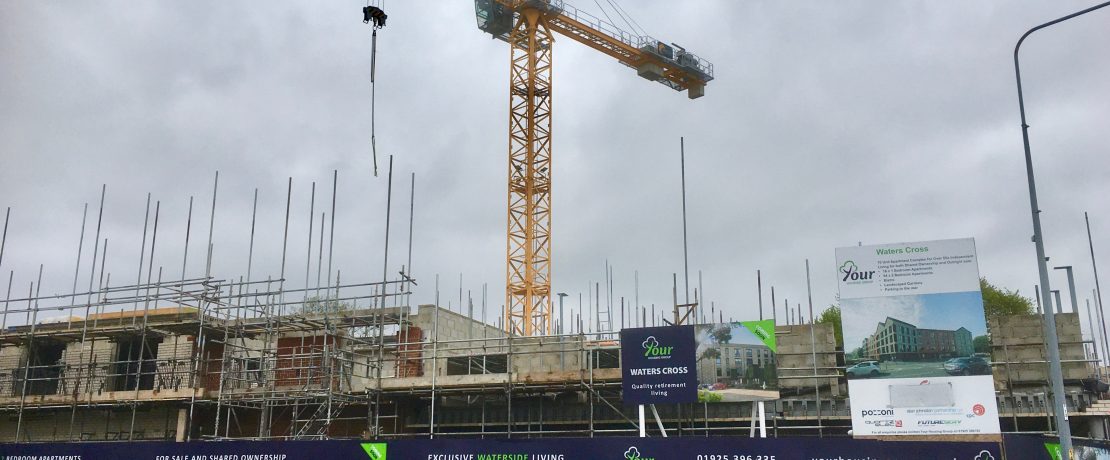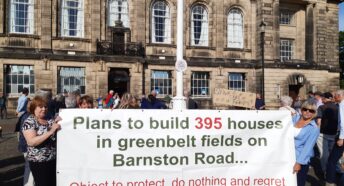What’s the plan? An analysis of local plan coverage across England.
Local Plans are a vital part of the planning system, determining what gets built where. However, if there is no up-to-date Local Plan, it can be difficult or impossible for planning authorities to reject inappropriate planning applications.
Across Cheshire, Lancashire, Liverpool City Region and Greater Manchester the situation concerning up to date adopted local plans coverage is particularly bad, when compared with the poor national picture. Less than one third (ten out of 33), of local planning authority areas are covered with an adopted local plan to help guide development decisions. In CPRE’s opinion local plan led development is the most sustainable, and publicly accountable way to plan in the future, due to the democratic process involved.
Despite having a recently adopted local plan, Blackpool and Sefton Councils, can no longer demonstrate they have an, all-important, five year housing supply, which renders the local plan policies out of date. The consequence is ‘off-local plan’ sites in countryside, never intended for development, being given extreme positive weight in the planning balance for residential development. This is despite these areas having brownfield sites for housing delivery.
In our opinion, the current National Planning Policy Framework (NPPF) is too weak on the reuse of brownfield land, so not enough regeneration is occurring in our towns and cities. Local Plans are crucial, but the operation of the five year housing supply rule is stringent, making it extremely difficult for local planning authorities to control where development can or cannot go, and despite promises to protect our countryside, especially Green Belt, too much is being bulldozed. What is more, the Standard Method to calculate housing requirements is flawed. And the Government insistence on using Office of National Statistic 2014 based housing projections is poor practice now that more recent data exists.
We urge the Government to stop newly adopted local plans being so easily found out of date. There should be a more accurate way of forecasting future housing needs. Also, sites with extant permissions for housing should not be allowed to be excluded from the five year housing supply, when developers promote other applications to develop on farmland in our rural places. But, the Government seems only to listen to developers, and we see it does not necessarily yield the most socially responsible planning outcomes.
Local Authorities are having to use scarce resources to fight developers, and even the Government’s own appointed inspectors. Fylde Council had to challenge a Government appointed Planning Inspectorate at Judicial Review. The Inspector’s Report was quashed in the High Court on 1st April 2020, on the grounds they erred in law, in using this different housing requirement and therefore found the local plan out of date. A replacement report concludes that Fylde Council has a 5 year housing land supply until at least October 2020. For details: https://new.fylde.gov.uk/resident/planning/planning-policy-local-plan/five-year-housing-land-supply.
In Cheshire, both Cheshire East and West now have up to date local plans and a demonstrable housing land supply, but Warrington and Wirral’s countryside is still vulnerable, with an old, or no local plan, and without an all-important 5 year housing supply.
Greater Manchester coverage is also very patchy, with only Rochdale with an up to date local plan, six with local plans older than 5 years (so likely to be out of date), and three authorities with no local plan at all. In addition, six of Greater Manchester’s ten constituent authorities failed the Housing Delivery Test. It is hoped the Spatial Development Strategies of the Combined Authorities can plug the policy gaps of the NPPF and do more to regenerate our cities and conurbations before countryside is too easily sacrificed.
All of the authorities in Cheshire, Lancashire, Liverpool City Region and Greater Manchester were required to add a housing buffer for previous persistent under-delivery.
Jackie Copley, Planning Manager said “When you look at the reasons for under-delivery, the lack of capacity in the construction sector, lack of demand for housing following the banking crisis, and ongoing economic volatile conditions (even without Covid-19) there is little prospect of housing markets bouncing back, and as it is completions that local authorities are performance checked on, there is little prospect of them passing the stringent Housing Delivery Test. Housing delivery should be in accordance to need, including affordable homes, in places based on sustainable development principles. We should focus on brownfield reuse in our towns and cities, and not sacrifice countryside so easily.”








